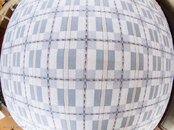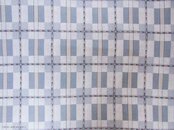Phil, understand the quaility issue between the two lens (I only own the 7 -14 for that reason).
However, there is a major issue using any really wide angle rectilnear lens really close up...and it has nothing to do with putting it in an underwater housing.
I had to run outside and retest, just to make sure I am not blowing smoke... but this lens will focus to around 4 inches from the front of the lens (did not actually measure, but it is around that number.
From 4 inches, the field of view is approximately 11 inches (assuming I can read a tape measure correctly). At that point the corners of the image are actually almost 8 inches away. Just do a test image and you will see that the corners are essentially out of focus. You can make this better, obviously, by using a higher f-stop, and one obviously gets more depth of field from the smaller mm of the lens, but no lens can cover that huge of a difference.
Note: Just do a test image with a curved tape measure to see the effect, you can actually get sharp corners then.
Fish eye lens cover it because they are effectively a variable mm lens, with it being much smaller at the edges, and because the center is essentually a higher mm, you don't need to be as close to get the same center image size. Also, at the very edges, the images are so small as to make resolution fairly unimportant.
I use the lens a lot for commercial work, particularly where one needs a flat, wide field of view, and it's image quality around the 9 to 12 mm range is very good.
---------- Post added ----------
Phil, I absolutely love the level of technical detail you go into. But a couple of things:
1. The results can be no better than one would get on land, taking images without a case. I don't believe it is very practical to fix an existing lens issue.
2. By accident, you happen to have (in some images) the left hand person closer to the camera and the right hand person almost center in some and out to the right in others. Focus point may not have been exactly the same point in all of those images (but you would know far better than me on that issue).
There must be hundreds of different test one could make, and different conclusions you could make from doing one test like this. I would suggest that using a bit more scientific approach to might be quicker and answer a whole bunch of questions at the same time (not sure how much you know about experimental design, but this cries out for it)
I seriously wish there was more work done like this, so thanks for taking the time.
[
QUOTE=PHIL RUDIN;6379787]
View attachment 127082View attachment 127083
To begin to understand how lenses as wide as the Panasonic 7-14mm work under a dome port you may want to read the attached,
Digital Immersions: Pool tests for optimized corner performance on various wide angle lenses underwater
Here a test is being done with the Nikon 14-24mm zoom on a full frame camera with a nine inch GLASS dome port and a number of different extension ports. The 14-24 lens has the same 114 degree angle of view as the Pana 7-14 at the 7mm end of the lens. Among the findings is that an extension port with as little as a 5mm difference in length made a great difference in corner sharpness at 114 degrees. Expecting a one size fits all type of port to work with such a wide lens a bit of a pipe dream. Other lenses are tested as well and the less AOV the better the results. The Tokina 10-17 fisheye is also tested and like all fisheyes the results are better with less equipment.
Look at the ZEN ports, the 9-18/14-42 port has the same port glass as the 7-14 ZEN port but the ports are a different length to get best results. Second the glass has the same curve as a 170mm dome even though the glass is only around 100mm. The six inch Nauticam dome for the 7-14 zoom has a port equal to the curve of about a 230mm dome.
To compare the 7-14 to the 8mm fisheye is like apples to oranges. For best results with a fisheye you need a hemisphere not a curved port and it can be much smaller. The ZEN port for the Pana 8mm is the same glass as used for lenses like the Tokina 10-17 and Nikon 10.5 fisheye on APS-C sensors as well as the Canon 8-15 fisheye. The size of the dome alone allows you to get better CFWA than with the larger six to nine inch dome ports.
The bottom line is that the Panasonic 7-14 zoom can produce stunning results even with soft corners. The corner issue with any rectilinear lens as wide as 114 degrees is going to be the same and regarding your port selection you will likely get the results that you pay for.
The differences between rectilinear and fisheye are huge and I think most U/W photographers tend to tilt towards one or the other as their go to W/A lens.
The attached images give a little bit of an idea of how different the Panasonic 8mm fisheye is v. the Panasonic 7-14mm zoom at 7mm. Images taken 18 inches from the flat subject.
Phil Rudin[/QUOTE]



